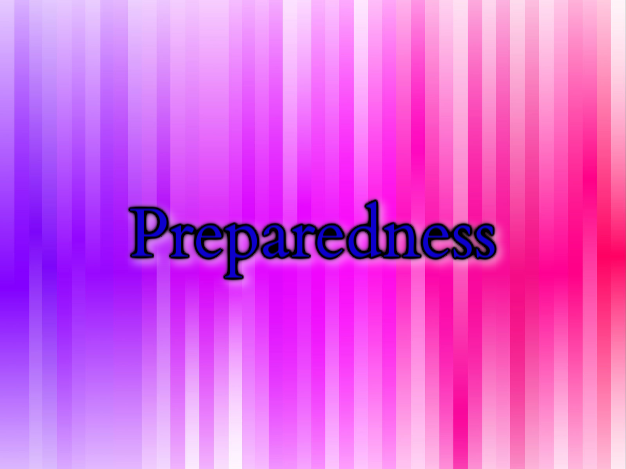
NC Gov Cooper Declares September as Preparedness Month
NC PRESS RELEASE --Urges Residents to Prepare for All Emergencies, Natural Disasters Raleigh Sep 4, 2018
As students return to school and the peak of hurricane season arrives, Governor Roy Cooper declared September as North Carolina Preparedness Month to encourage individuals, families, schools and businesses to review their emergency plans and update their emergency supply kits.
“North Carolinians are resilient and have endured hurricanes, floods, tornadoes, mudslides, wildfires, winter storms and more,” Governor Cooper said. “We know that planning and preparation pay off when a disaster strikes. Having simple emergency plans and basic supplies in place will help you survive storms and recover faster.”
The governor’s declaration coincides with National Preparedness Month, sponsored by the Federal Emergency Management Agency, in which all Americans are encouraged prepare for all types of emergencies.
In 2017, North Carolina experienced 30 tornadoes, 548 severe thunderstorms with high winds, 102 hailstorms, 104 flood events and winter storms that caused power outages and dangerous driving conditions.
In 2018, communities in Guilford and Rockingham counties are continuing to recover from a tornado that struck April 15 with winds of up to 135 miles per hour. May brought torrential rains to Western North Carolina that claimed the lives of five people and caused mudslides and washed out roads and bridges. The Governor is continuing to seek help for 13 western counties and is appealing FEMA’s denial of a federal disaster declaration.
“A little preparation and planning now can pay big dividends when disaster strikes,” Public Safety Secretary Erik A. Hooks said. “Have a plan for your family, make sure everyone knows the plan, and gather basic supplies in your emergency kit.”
Natural disasters can strike at any time, so it is critical that everyone know what to do and where to go when danger threatens.
Several landmark storms have impacted North Carolina during the late summer or fall months in years past.
Hurricane Matthew on Oct. 8-9, 2016 dumped between eight and 12 inches of rain across much of Eastern North Carolina. Thirty-one people died as a result of the storm that closed more than 600 roads, sent more than 4,000 people to seek safety in shelters and did $4.8 billion worth of damages. Fifty counties qualified for federal assistance and recovery is continuing, with more than $743 million on the ground and an additional $628 million allocated or awarded to help families
On Aug. 27, 2011, Hurricane Irene struck near Cape Lookout causing two-to-four feet of storm surge along much of the Outer Banks and up to 15 feet of storm surge along portions of the Pamlico Sound. Seven people died as a result of the Category 1 hurricane that flooded more than 270 roads, caused 660,000 power outages and left behind more than $686 million in property and agricultural damages. More than one-third of the state’s counties qualified for federal financial assistance to help them recover.
The strongest hurricane to strike the state in the past half century, Hurricane Fran made landfall near Cape Fear on Sept. 6, 1996 as a Category 3 storm. Fran remained a Category 1 storm after landfall as it marched across the Piedmont, dumping nearly nine inches of rain on the Triangle. Twenty-four North Carolinians lost their lives due to the hurricane. For the first time in state history, the governor declared a state of emergency for all 100 counties.
Flooding is often the greatest threat to life and property when disaster strikes, and any place it rains can experience flooding. Emergency Management experts recommend considering getting flood insurance, even for homes that aren’t in the flood plain.
“The time to plan for the next disaster is now—not when the storm is about to strike,” said Mike Sprayberry, state Emergency Management director. “I encourage all North Carolinians to use the information available at ReadyNC.org to make a plan, gather supplies, and take any other steps they need to get ready.”
For more information on how to ensure your family is disaster ready, go to ReadyNC.org or download the free ReadyNC app, which features real time weather, traffic and shelter information. Also, check to see if your local community offers an emergency alert service for its residents.
Follow @NCEmergency on Twitter and Facebook during September for daily tips you can use to become better prepared for emergencies and disasters.
# # #
Contact Information
Ford Porter
govpress@nc.gov
919-814-2100


 How to resolve AdBlock issue?
How to resolve AdBlock issue? 